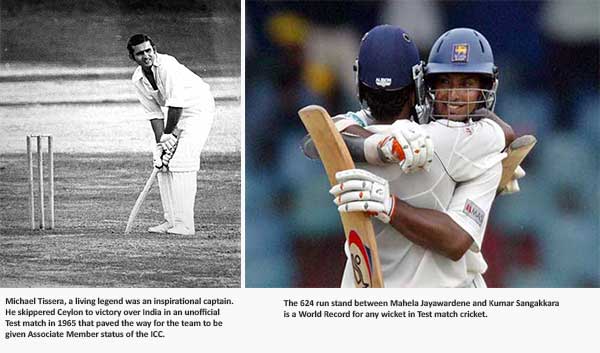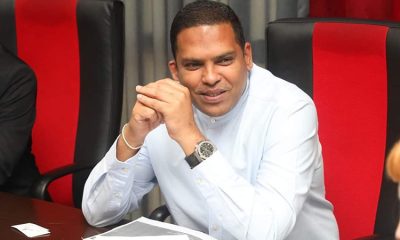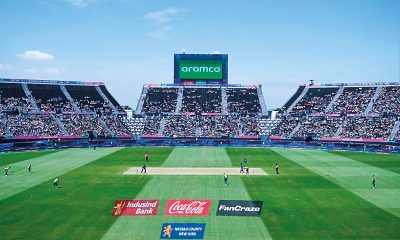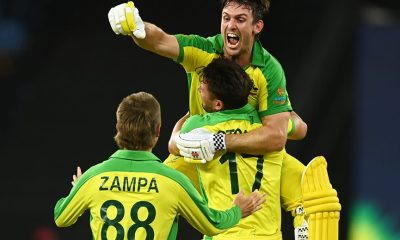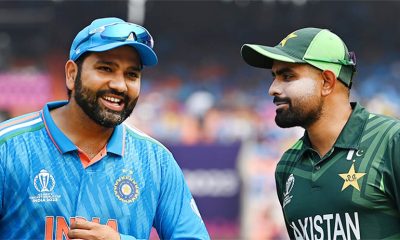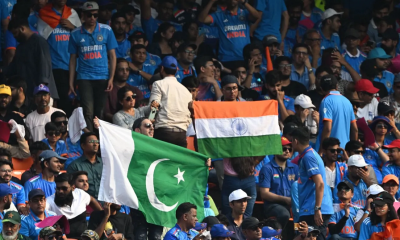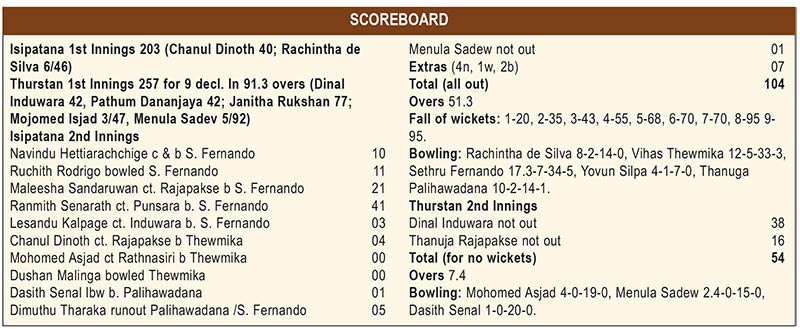Sports
Celebrating 75 years of cricketing excellence
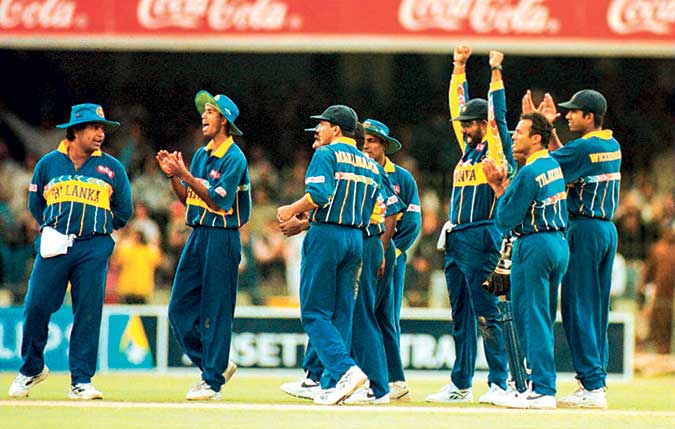
by Rex Clementine
A new controlling body for cricket in Ceylon was formed on the 25th of June 1948 and was named Board of Control for Cricket in Ceylon. Today marks the 75th anniversary of the formation of the cricket board. At a meeting held at the Malay Cricket Club at Rifle Green, P. Saravanamuttu was elected as President of the board. The entity has over the years gone through name changes such as Board of Control for Cricket in Sri Lanka and its present name Sri Lanka Cricket.
The initial crest of the board contained two elephants, a coconut tree, a paddy field and Adam’s peak. Over the years this too has gone through significant changes. At a time when the country didn’t have full member status of the International Cricket Council, opportunities against international sides were few and rare and usually teams travelling to either Australia or England played a game or two as their ships docked at Colombo harbour. India and Pakistan of course engaged in regular contests called ‘unofficial Tests’.
Goonasena makes his mark
Several Ceylonese cricketers in the early days such as Dr. C.H. Gunasekara, F.C. de Seram, Gamini Goonasena, Laddie Outschoorn and Stanley Jayasinghe excelled in County Cricket in England. Goonasena among them made a name for himself having become the first Asian to captain Oxford or Cambridge. He completed the double of 1000 runs and 100 wickets for Cambridge in two seasons and repeated the feat twice at Nottinghamshire, which he represented for 11 seasons. Subsequently he became the first Ceylonese to be named as one of Wisden’s five cricketers in 1957.
Tissera’s remarkable captaincy
The year 1965 was a landmark one for cricket in Ceylon. The team had travelled to India for a three-match four-day unofficial Test series and they beat a strong Indian side skippered by Tiger Pataudi. The victory came in Ahmedabad and Tissera’s bold captaincy was hailed by all and sundry. It was the captain’s declaration with the team still trailing that set up the match. The victory had its rewards as later that year Ceylon were made an Associate member of the ICC. The proposal was brought forward by the Board of Control for Cricket in India and seconded by Pakistan. Tissera, a living legend richly deserves to have a trophy named after him in international cricket as West indies and – Sri Lanka play for Sobers – Tissera Trophy.
First ACC meeting in Colombo
In 1972, Sri Lanka hosted the Asian Cricket Council conference with the participation of key stakeholders of the region. Sri Lanka was represented by Shelly Wickramasinghe and Neil Perera.
ODI status for Sri Lanka
For the inaugural World Cup in 1975, the full members of the ICC took part and two other teams had been invited – East Africa and Sri Lanka. It was an historical event as Sri Lanka played their first major cricket competition and their batters had a decent outing with the world appreciating the efforts. Their first ODI was against West Indies. While there were 11 Sri Lankan debutants in that game, there were also two West Indies players who were making their debuts – a certain Vivian Richards and Andy Roberts.
Sri Lanka wins ICC Trophy
For the subsequent World Cup in 1979 there was too much interest and the ICC had to conduct a qualifying round. It was called the ICC Trophy and the two finalists were going through to the World Cup. Sri Lanka beat Canada in the finals of the ICC Trophy and shocked a strong Indian side during the World Cup at Old Trafford. They became the first Associate Member to beat a full member of the ICC. This win went a long way in the team being granted Test status two years later. Anura Tennakoon captained the Sri Lankan side
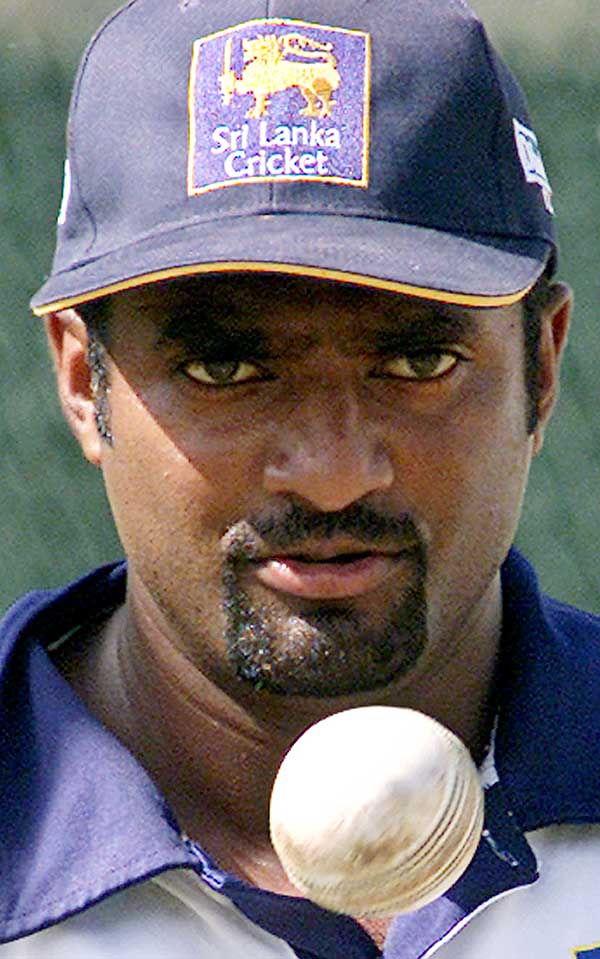
Muttiah Muralitharan holds the World Record for most wickets in Test match cricket and One-Day Internationals
Test status for Sri Lanka
With Gamini Dissanayake becoming the President of the board, there was an aggressive push to gain Test status. A powerful Cabinet Minister, he addressed key areas like new venues to host international games, sponsorships from the private sector, three-day cricket, indoor nets and trained coaches in a bid to make the nation’s cricket team a strong force. To his credit, in his first attempt Sri Lanka were granted Test status on July 22nd, 1981.
Impressive feats in international cricket
Sri Lanka played their inaugural Test match in 1982 against England and it took them just three years to win their maiden Test match – against India in 1985. The Asia Cup win came not too long after that and it was a feather in the cap of a young cricketing nation. Duleep Mendis skippered the side in both landmark victories.
Sri Lanka’s first overseas Test win came in 1995 in Napier against New Zealand. Just 15 years after gaining full membership of the ICC, the national team went onto win the ICC Cricket World Cup in 1996. Since then, the team has won a T-20 World Cup and reached two other 50 over World Cup finals and two more T-20 World Cup finals. They were also joint champions of the 2002 Champions Trophy when they shared the trophy with India.
The team’s 952 for six declared in the 1997 Test match against India is a World Record. Sanath Jayasuriya scored a triple hundred and Sri Lanka had a triple centurion in Test match cricket seven years before India had one, although the big brother had been playing Test match cricket since 1936.
In 1998, Sri Lanka recorded their first Test win in England. Eight years later, they whitewashed England in their backyard 5-0 in ODIs. In 2014, the team won their first Test series in England.
In 2011 Sri Lanka won a Test match in South Africa for the first time and in 2019 they became the first Asian nation to win a Test series in South Africa. In fact, apart from Australia and England, no other team has won a Test series in South Africa.
Spin legend Muttiah Muralitharan is world’s highest wicket taker in Test match cricket with 800 scalps to his name. His 534 wickets in ODI cricket is also a World Record.Interestingly, Sri Lanka had two batsmen – Mahela Jayawardene and Kumar Sangakkara – scoring 10,000 Test runs, before anyone from England reached the milestone. England started playing Test cricket more than 100 years before Sri Lanka.In 2006, Jayawardene and Sangakkara added 624 runs for the third wicket against South Africa, a World Record for any wicket in Test match cricket.
At one point, Sangakkara was ranked world’s number one batter while Muralitharan held the number one rank for bowlers for a record number of weeks.In 2020, Sangakkara became the first non-British President of the Marylebone Cricket Club.
Twenty years before him, fellow Kandyan Ranjan Madugalle was made Chief Match Referee of the ICC ahead of other illustrious former players like Clive Lloyd, Gundappa Viswanath and Mike Procter.There are so many other individuals who have so generously contributed for the benefit of cricket in Sri Lanka and there are several other milestones in the sport that has brought credit to the country. It is regretted that we are not able to record each of those moments or mention all those individuals.
Sports
Bowlers’ show as Thurstan cruise to ten wickets win
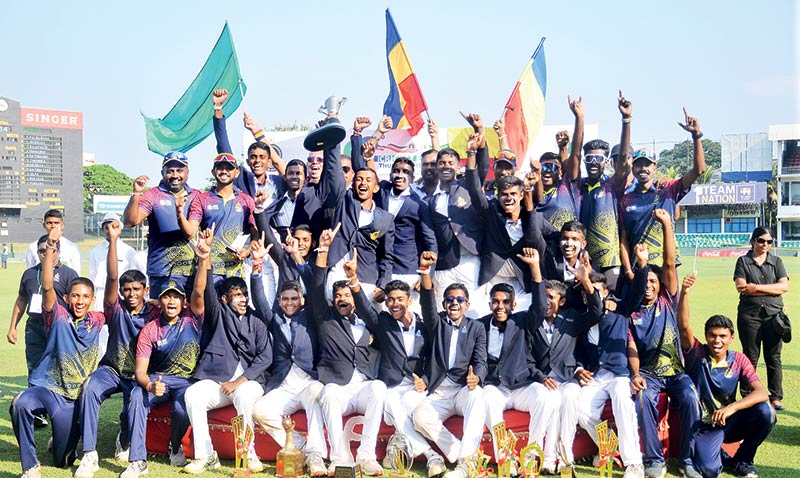
62nd Battle of the Brothers
Rachintha de Silva in the first innings and spinner Sethru Fernando in the second innings produced the much needed special bowling performances to lead Thurstan to massive ten wickets victory over arch rivals Isipatana at the 62nd Battle of the Brothers big match at the SSC ground on Sunday.
The team captained by Thanuga Palihawadana scored their first victory of the series in six years as openers Dunal Induwara and Thanuja Rajapakse kept their wickets intact to reach the target in eight overs.
The two teams could not be separated when they met in the three-day semi-final last week at Sooriyawewa. But at the SSC Rachintha gave them the edge taking six wickets in the first innings to dismiss Isipatana for 203 runs.
In their essay Dinal Induwara (42), Pathum Dananjaya (42) and Janitha Rukshan (77) scored the bulk of runs for Thurstan to post 257 for nine wickets declared.
The third day belonged to spinner Sethru Fernando as he rattled Isipatana top order with a five wicket haul.
Sri Lanka Under 19 skipper Vihas Thewmika took three wickets.
It was Thurstan’s seventh victory in the series as they added the big match victory to their recent success in the Tier ‘B’ tournament.It was the first time the two teams met in a three-day Big Match.
Latest News
Kohli 100* headlines India’s comprehensive win against Pakistan
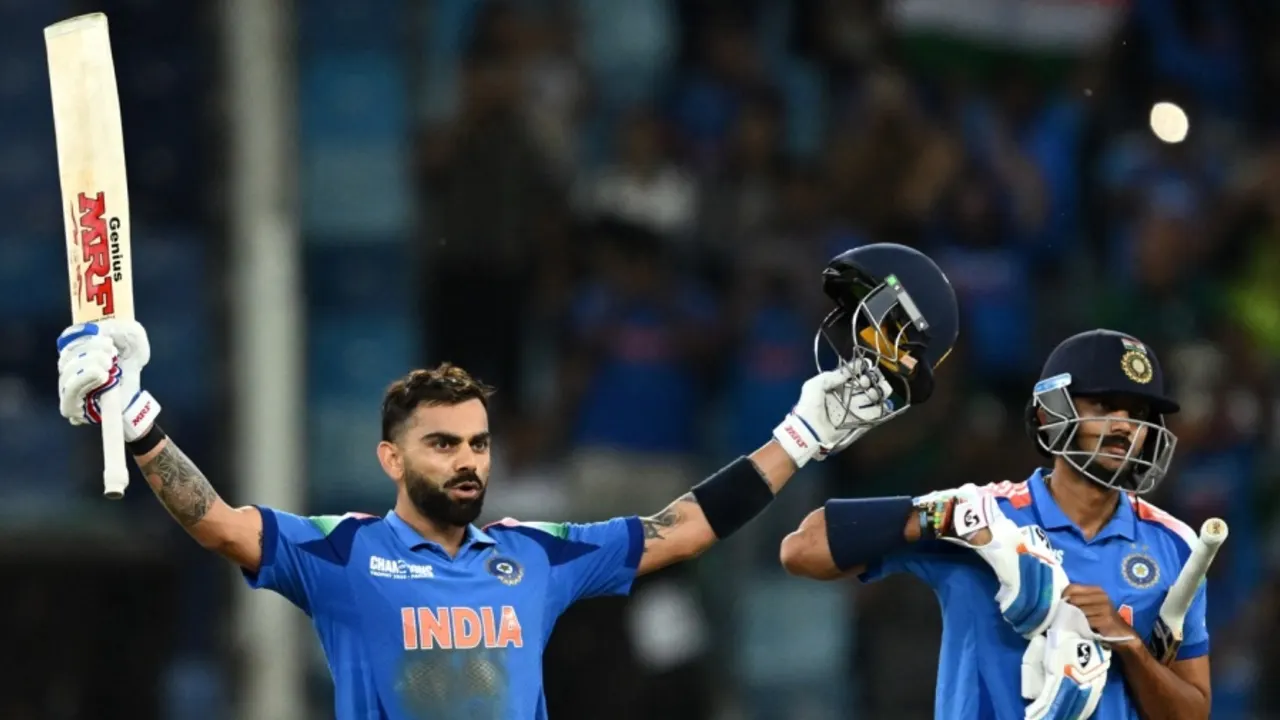
In the biggest match of the year, with his mortality showing more than it ever used to, Virat Kohli proved he’s still got it, that maybe, just maybe, the little he’s lost isn’t going to define him. He ticked off 14,000 runs in ODI cricket, brought up his 51st ODI century, set up India for a semi-final spot and essentially crossed out Pakistan from the 2025 Champions Trophy. The holders and the hosts need other results to go their way to stay alive in the tournament now.
India went into the game as favourites. They were worthy of that seeding, limiting Pakistan to 241 with Hardik Pandya putting in the kind of performance that should make him illegal. An allrounder capable of dismissing the opposition’s best batter, and then coming back to take down their top-scorer, isn’t just a name on the sheet. He is the secret sauce.
And Kuldeep Yadav was the spice. His left-arm wrist-spin is so rare and he made it rarer by finding a way to be quick through the air without compromising on turn or accuracy. So that means unless batters pick him out of the hand, they are always going to be guessing. Three Pakistan batters guessed wrong. All three were end-overs wickets. Pakistan were setting up to explode at the death. Kuldeep just wouldn’t let them. The injury hasn’t affected his menace.
Pakistan were able to produce moments. Shaheen Shah Afridi sending down a 143kph inswinging yorker to shatter Rohit Sharma’s stumps. Abrar Ahmed conjuring a carrom ball from hell to get rid of a rampaging Shubman Gill. But when it came to capitalising on them, they just couldn’t. The result was a world champion side that was renowned for pulling games out of the fire now seems to do the first part right – they definitely got into trouble in Dubai – but the other part, the important part is going so very wrong. Pakistan were 151 for 2 in the 34th over before they were bowled out for 241 with the most inexperienced member of the India side dictating terms, Harshit Rana and his slower balls were just impossible to hit.
A game in an ICC event and a rivalry with history bursting out of it eventually became so one-sided that its last few moments were dominated by an individual pursuit. Axar Patel turned down an easy two so Kohli could pursue his hundred. The crowd in Dubai loved that. There were 12 runs to get for India’s victory and 12 runs to get for their hero’s century and they chanted his name over and over. Pakistan were nowhere to be found. Ever since a collapse of 3 for 11 in 19 balls, this game turned pear-shaped for them.
Mohammad Rizwan had banked on the innings going so differently. He came in at 47 for 2 and hit his first ball for four and then decided run-scoring was not for him. He was 24 off 50. He barely hit the ball in anger. He point blank refused to. At the other end, Saud Shakeel was at least making an effort to turn the good balls he was facing into singles. When he got to fifty, he had weathered only 29 dot balls. At the same time, Rizwan at the other end, had racked up 40. India did well by denying him spin to start his innings. But still, this was a better pitch than the opening game in Dubai a few days ago. It wasn’t flat, but it had a little more pace in it, and it got better under lights. Rizwan, though, batted like it was cursed. He was worried bad things would happen if he tried to hit the ball hard.
And it kinda did. Rizwan fell trying to hit Axar out of the ground and his wicket triggered a collapse. Shakeel fell in the next over and Tayyab Tahir followed soon after. India, having spent 320 deliveries across two matches searching for a wicket in the middle overs, had found three in the space of four. Pakistan were 165 for 5. Soon they would be 200 for 7, having to negotiate the last 7.1 overs of the innings with their tail exposed.
India’s discipline never let Pakistan off the hook and leading the way was Hardik, banging the ball just short of a length on a pitch that was offering a bit of grip and some tennis-ball bounce. He took out Babar Azam at a time when India’s lead fast bowler, Mohammed Shami, was off the field with a shin problem and he did Shakeel for lack of pace just after the left-hander had smacked him for four. He always knew what to do to exploit the conditions and make the batter’s life miserable. On the back of his work, Kuldeep and Rana bowled 6.4 death overs for 28 runs and picked up four wickets.
Gill was the star of India’s chase early on, a conscious effort to keep his front foot from moving too far forward and across leaving him excellently placed to take advantage of Afridi and his full length deliveries when there was no swing on offer. When he rammed the Pakistan fast bowler down the ground and then one-upped it by coming down the track and lifting the ball into the sightscreen, it looked like it was going to be his day. Abrar intervened with a ball that drifted in through the air, tempting the right-hander to close the face of his bat, and turned away to rattle middle and off stump. Gill was stunned.
Kohli, too, offered a shrug of his shoulders. He looked vulnerable against Abrar too and was almost bowled playing back to him. But against the quicks, he was vintage. He went past 14,000 runs with a crisp cover drive off Haris Rauf. All of Pakistan’s best bowlers offer pace on the ball. And that is Kohli’s happy place. A batter of his quality needs to be made uncomfortable at the crease when he is new. He had been dismissed five times in his last six ODIs by legspin. Pakistan had one of those and they felt they couldn’t go to him.
Shreyas Iyer helped himself to a half-century. A little change in his technique where he holds his bat higher and waves it as the bowler approaches, creating momentum into his shots, is helping him deal with an earlier weakness against the short ball. He clubbed Rauf for four in front of square to prove it. But there was no taking the spotlight from his senior partner.
Kohli was setting the tempo. Pakistan had allowed to do so. Though he only hit three of his first 62 balls to the boundary, he already had fifty runs to his name. He knows how to score quickly without looking for big shots. The ball wasn’t stopping on the surface as much under lights. Things were working in his favour again. He almost knew he was going to get a hundred. He demanded an explanation when Axar turned down a second run off a wide in the 42nd over when it was clear to everybody else that all he was doing was make sure Kohli had the best chance to get to three-figures with time running out. When he did, off the last ball of the match, Kohli looked to the dressing room and literally said “I told you. Relax”. That was how easy this was. That was how inevitable he was.
Brief scores:
India 244 for 4 in 42.3 overs (Rohit Sharma 20, Shubnam Gill 46, Virat Kohli 100*, Shreyas Iyer 56; Shaheen Shah Afridi 2-74) beat Pakistan 241 all out in 49.4 overs (Saud Shakeel 62, Babar Azam23, Mohammad Rizwan 46, Khushdil Shah 38; Hardik Pandya 2-31, Kuldeep Yadav 3-40)by six wickets
[Cricinfo]
Sports
Air Force Rugby on the path to its glorious past
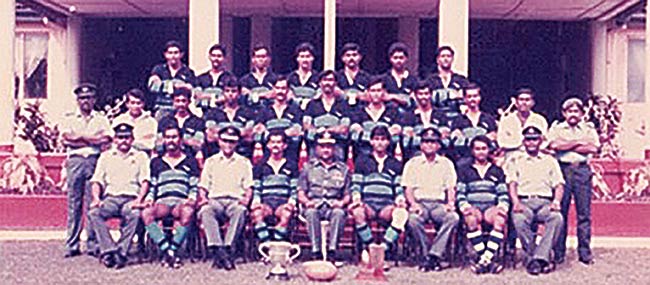
From its humble beginnings in 1955 as the Royal Ceylon Air Force (RCyAF) Rugby team, Sri Lanka Air Force (SLAF) can be proud of its achievements in the field of Rugby in the country. Over the years SLAF has produced some top Rugby players in the caliber of Harry Goonetilleke, Jeff Ratnam, Charles Wijewardena, Viper Gunaratne, Ronald Rodrigo, Mohan Balasuriya, Tikiri Marambe, Nalin De Silva, Chandana Deepthi, Rex Anthony and Charith Seneviratne to name a few.
In 1956, RCyAF participated for the first time in the Inter Service Rugby Championship. The team lost to Navy (0 -3), however, beat the Army 14 -11. RCyAF won the Inter Services Rugby Tournament for the first time in 1957. 1965 was considered a memorable year for RCyAF Rugger as they won the “B” Division Rugby League and qualified to play in the “A” Division Rugby in 1966. Besides, they reached the finals of the Clifford Cup for the first time. The Clifford Cup final was played on 15 August 1965 at Langdon Place. RCyAF team lost to CR & FC 0 -11 and became the runners up.
In 1975 SLAF Rugby team created history, when they won both A’ Division and ‘B’ Division Rugby League Championships and becoming the first team to achieve this milestone. During the season, SLAF led by Squadron Leader Shanthi U. Mendis, were victorious in 12 out of 16 games. In the knockouts they entered the Clifford Cup final by beating Kandy SC led by Iswan Omar in the semis, in extra time. In the finals, SLAF lost to Army SC in a close match 3-4. Tissa Nanayakkara scored the solitary penalty for SLAF and for Army, it was Amaradasa who scored the winning try. Unfortunately for the Air Force, Nanayakkara missed a 35-meter penalty in front of the post with two minutes to the full time. Squadron Leader Tony Dirckze was the Command Rugby Officer whilst Squadron Leader Eddie Buell coached this champion outfit.
The finest moment of SLAF Rugby was the winning of Clifford Cup in 1986 under Corporal Lakshman Caldera beating a star-studded Police SC 10 -8. In the Quarter Finals, SLAF beat Navy SC 44 to10 and beat CH & FC 8-4 in the semi-final. A try in the extra time by Flying Officer Harsha Fernando helped Air Force SC to beat CH & FC after the scores stood at 4-all at full time. Air Force SC confronted the mighty Policemen in the final on 16 August 1986 and scored a sensational 10-8 win to clinch club rugby’s richest prize – the Clifford Cup. Second row forward Corporal Lofty Perera (jnr) scored the solitary try for the Airmen, while Corporal Tony Wimalasuriya fired across two penalties. Air Vice Marshal Brendon Sosa was the Chairman of SLAF Rugby at this historic occasion and the team was coached by late Air Vice Marshal Channa Gunaratne.
After a considerable period of mediocre performance, SLAF bounced back to reckoning when they reached the finals of Clifford Cup Rugby Tournament in 2019, after a lapse of 33 years. In the semi-finals SLAF beat Police SC 32 to 23. On 24 March 2019 they met Havelocks SC at the Cup Finals under flood lights at the Race Course ground Colombo. SLAF went down gallantly 21 to 40. During the on-going 2024 /25 Rugby season, SLAF Rugby team has performed excellently thus qualified for the Super Round after a lapse of 13 years. The team is led by Rumesh Wasantha will try to give their best at the Super Round as well. Former Thurstan College and Air Force Flanker, Air Commodore Subash Jayathilake is the Chairman SLAF Rugby and the incumbent Commander of the Air Force Air Marshal Bandu Edirisinghe has given a tremendous leadership to this young outfit.
Air Vice Marshal
Padman De Costa Former Secretary Air Force Sports Council and Secretary Defence Services Sports Board
-

 News5 days ago
News5 days agoCommercial High Court orders AASSL to pay Rs 176 mn for unilateral termination of contract
-
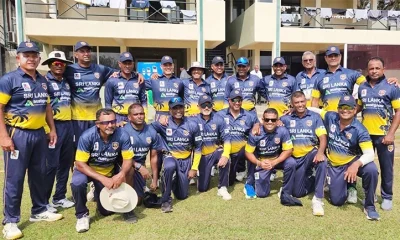
 Sports4 days ago
Sports4 days agoSri Lanka face Australia in Masters World Cup semi-final today
-

 Features6 days ago
Features6 days agoUSAID and NGOS under siege
-

 Features6 days ago
Features6 days agoDoing it in the Philippines…
-

 Midweek Review5 days ago
Midweek Review5 days agoImpact of US policy shift on Sri Lanka
-

 News4 days ago
News4 days agoCourtroom shooting: Police admit serious security lapses
-

 Business6 days ago
Business6 days agoDialog delivers strong FY 2024 performance with 10% Core Revenue Growth
-
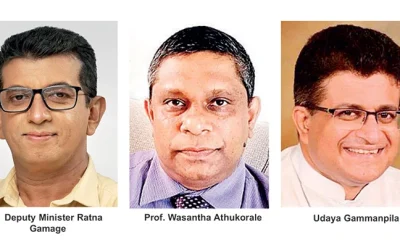
 Business5 days ago
Business5 days agoBudget 2025: A spectrum of reactions and perspectives

